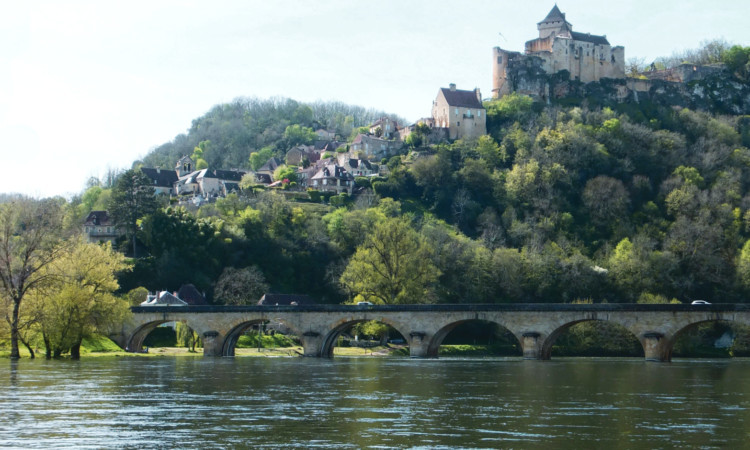
The Dordogne, in south west France, was one of the first areas of the country to be discovered by the British.
That was partly down to the low property prices and a climate so much better than home. Of course houses are no longer cheap, but the weather is even warmer and English is widely spoken. Imagine fairytale castles perched precariously on limestone cliffs overlooking the Dordogne River, and picturesque medieval villages nestling in the middle of forests and you get the picture.
It’s easy to explore as the three main towns are only around 50km apart, but you’ll need to hire a car from Bergerac airport.
If you like medieval and renaissance buildings, then Sarlat is a good place to start as its traditional facades and stone roofs, have all been recently restored.
Step inside the bell tower of the former glise Sainte-Marie and take the Panoramic Elevator, a fancy name for a lift with glass walls. It takes you high above the rooftops and an English speaking guide gives you a potted history of Sarlat as you ascend.
You look down on the sprawling market, with stalls occupying the square. When you get back to ground level, you’re offered tastings of local products including cheeses, meats, nougat and Foie Gras.
Although the town abounds with restaurants, a great lunch spot is Les Jardins de Marqueyssac, around 10 km away.
It has a spectacular view of the castles of Fayrac, Beynac and Castelnaud.
To walk off your lunch take a stroll in the gardens, which consist of 150,000 boxwood trees planted in the 19th Century. They’ve been carved into imaginative shapes, some resembling flocks of green sheep.
Six kilometres of paths link belvederes, waterways and rockeries, and if you’re lucky you might see an occasional peacock displaying its multi-coloured tail.
The village of La Roque-Gageac, carved out of the cliffs, lies below right on the river. Traditional wooden boats from Les Gabares Norbert will take you on a cruise and the medieval castles seem even more impressive from the water.
My favourite is the 13th Century Chateau de Castelnaud, home to the Museum of Medieval Warfare, which houses one of the world’s finest private collections of ancient weaponry. Full size reconstructions of siege machines sit outside the walls and, if you’re lucky, you’ll see the giant catapult in action and hear live cannon fire.
The big city, and capital of the department, is Prigueux, originally the Roman town of Vesunna, and you can see still see the ruined Tour de Vsone, rising 85 feet as well as remains of the amphitheatre. There’s an attractive medieval quarter, crammed with half-timbered houses, but the crown jewel has to be the white Byzantine domed Saint-Front Cathedral. Originally consecrated in 1047, it’s been rebuilt over the years, and was last restored between 1852 and 1895 by Paul Abadie, the architect of the Sacr-Coeur in Paris.
The cathedral contains the relics of Saint-Front, the first Bishop of Prigord, and it’s a major stop for pilgrims following the Way of St James to Santiago de Compostela in Spain.
Another important religious monument is the Abbey of Brantome, known as the Venice of the Prigord because of its situation on a loop of the River Dronne.
The bell tower dates from the 11th Century and is one of the oldest in France. In the rock behind it is a network of more than a dozen caves where the monks once lived and there’s a spectacular medieval fresco carved into the walls.
On my way back to the airport in Bergerac, I visit the medieval village of Eymet, most of it now apparently occupied by British expats. It’s a striking example of the Bastides fortified towns that were built in the Middle Ages to protect the rural population in times of war.
Here you find a cluster of half-timbered houses, laid out in a grid pattern, linked by narrow alleys to a central square. There’s a market there twice a week and, in summer, the tourist office dresses up actors in medieval costume.
The Dordogne is well worth a visit it’s like a real-life history book with its castles and medieval towns taking you on a trip back in time. The region isn’t known for wines but the Bergerac white is good.
Just be aware that, in this part of France, duck is king so be prepared to eat it smoked, dried, roasted or braised.

Enjoy the convenience of having The Sunday Post delivered as a digital ePaper straight to your smartphone, tablet or computer.
Subscribe for only £5.49 a month and enjoy all the benefits of the printed paper as a digital replica.
Subscribe